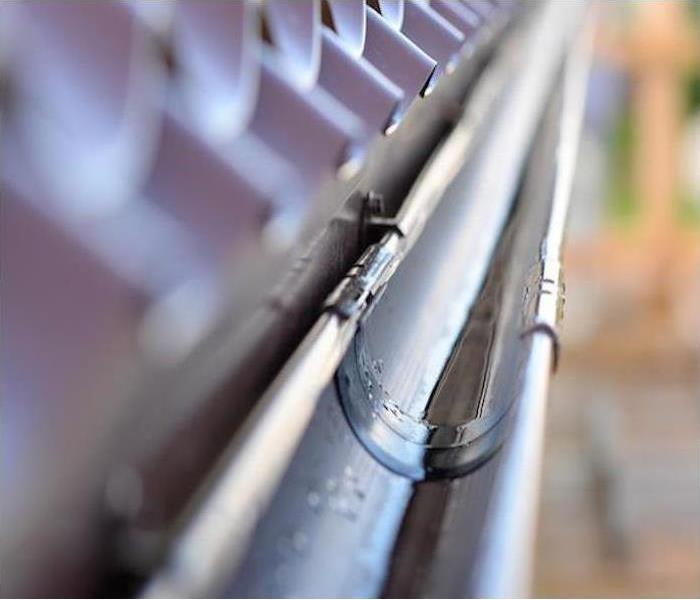Common Issues with Gutters
7/3/2017 (Permalink)
When water gets into the foundation of your home, it has the potential to cause structural issues to the home. The result of a wet foundation can also be windows and doors sticking to their frames. Gutters are installed on houses and connected to downspouts precisely to avoid this problem. These systems are essential in protecting the structure and integrity of your home. But, in order for these systems to work, you will need to ensure that these systems are free from clogs, holes, and sags.
Clogged Gutters
The most common problem that tends to occur with gutters are clogs caused by debris. The additional weight that is caused due to the accumulation of leaves, twigs, and standing water will cause the gutters to sag and pull away from the house. To avoid such a situation, you should clean your gutters at least once each year, twice if you have trees hanging over your gutters. Once the gutters are free of debris, you should use a hose to spray the gutters to make sure that the water is flowing as it should. Another option to consider are gutter covers. These cover the gutters from above featuring mesh screens, clip-on grates, and porous foam but still require regular maintenance.
Sagging Gutters That Pull Away from the House
If your gutters are sagging or starting to pull away from the house, the problem more than likely has to do with the hangers. The gutter hangers are the metal pieces of the system that secure the gutters to the fascia. They are easily noticeable as they stretch across the inside of the gutter. Over time, normal wear and tear may have caused these hangers to deteriorate. Other issues with the hangers may be that the fasteners may be detaching from the wood or that they are spaced too far apart so that they can no longer support the full weight of the gutters.
Damage to the Gutters
If your gutters have suffered damage, they may be leaking or have holes in them. If the issue is a leaky gutter joint, the issue can be solved by sealing the joint with caulking from the inside with gutter sealant. Likewise, any holes that are very small should be able to be sealed with gutter sealant. Big holes, however, will require a patch to be fixed.
Poorly Sloped Gutters
A common problem with gutters are that the gutters are not sloped down toward the downspouts. This means that the water cannot flow freely to the downspouts and down to the ground. To ensure that your gutters are properly sloped, you should have at least a quarter inch slope for every ten feet. If you have a rainstorm and there is standing water in your gutters following the storm without clogged gutters being an issue, your gutters are not sloped correctly. The proper course of action is to ensure that the gutters are sloped correctly to the downspout to ensure that the water can properly flow down to the ground and away from the house.
Water Draining Toward Foundation
For the downspouts to be effective, they should extend several feet away from the house. If the downspouts are located too close to the house, water can collect at the foundation. If the water drains into the foundation, serious issues to the home such as structural problems or windows and doors sticking to their frames could be caused. If your downspouts are draining too close to the foundation, consider installing gutter extensions to the bottom of the downspouts. This will ensure that the water drains away from the house far enough that it doesn’t cause any damage to the foundation of the home.
Gutters are an essential part of keeping water damage from effecting your home. When rainwater collects in the gutters or runs off the roof, the gutters drain the water into the downspouts which flow the water far away from the home and its foundation. Issues such as clogged gutters or sagging gutters could cause water to build up and damage the gutters. If the downspouts do not direct the water far enough from the home, it could infiltrate the foundation causing serious and expensive damage to the home. If you suffer from water damage in your home, call on the professionals at SERVPRO.






 24/7 Emergency Service
24/7 Emergency Service
